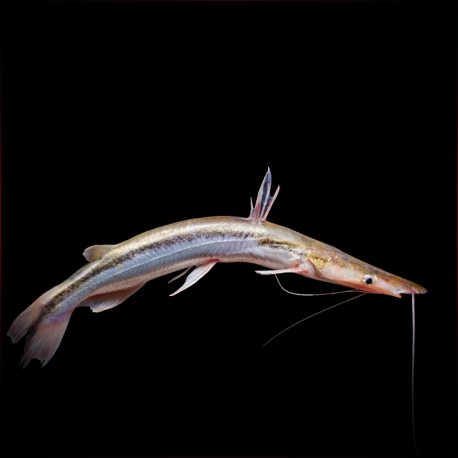More info
Datasheet
| Minimum Tank Size | 1000 litres / 264.17 US gallons |
| Maximum Size | 50.1cm / 19.72inches |
| Temperature | 23.3°C / 73.94°F - 30°C / 86.00°F |
| Hardness | 1-20ºdH |
| pH | 6.0-7.5 |
General Description
The Sorubim Lima, commonly known as the Duckbill Catfish, belongs to the Pimelodidae family and can grow up to 50.1cm in length. This species is found in regions spanning Venezuela, Ecuador, Colombia, Peru, Brazil, Bolivia, Paraguay, Uruguay, and Argentina, primarily inhabiting turbid white-water rivers but can also be found in quieter habitats like floodplain lakes.
Aquarium Setup
For optimal care, a tank size of at least 1000 litres is recommended, and the setup should include soft sand substrate, sizeable roots, and branches to create sheltered areas. Plants can also be added. Water conditions should be well-oxygenated, with a pH range of 6.0-7.5, hardness of 1-20°dH, and a temperature between 23.3-30°C. A robust filtration system and regular water changes of 30-50% are necessary due to the significant waste production of adult specimens. Refer to the provided table for detailed water parameter requirements.
Behaviour
The Duckbill Catfish generally has a peaceful demeanor unless smaller fish are present. It can coexist with appropriately sized tank mates like loricariids, cichlids, and larger characins and cyprinids. While juveniles are social, adults are less gregarious but can still be kept together in large tanks without displaying aggression.
Feeding and Diet
Being almost exclusively carnivorous, the Duckbill Catfish feeds on smaller fishes, crustaceans, and invertebrates in the wild. In captivity, they can be weaned onto dead foods but may require a period of acclimatization, especially when newly transported. Juveniles thrive on a protein-rich diet consisting of live or frozen foods like bloodworms, Tubifex, and prawns, while adults should be fed larger items like mussels, cockles, and earthworms 2-3 times a week.
Reproduction & Dimorphism
Limited information is available on the reproductive habits of the Duckbill Catfish; however, they are known to spawn at the beginning of the rainy season, aligning with the breeding patterns of Amazonian fish. Details on sexual dimorphism are unreported.
Habitat and Distribution
This species is versatile in its habitat, being found in both flowing river sections and quieter waters such as floodplain lakes. It particularly thrives in turbid white-water rivers. The Duckbill Catfish has a vast distribution range across several South American countries and is commercially fished for food in various river basins.

